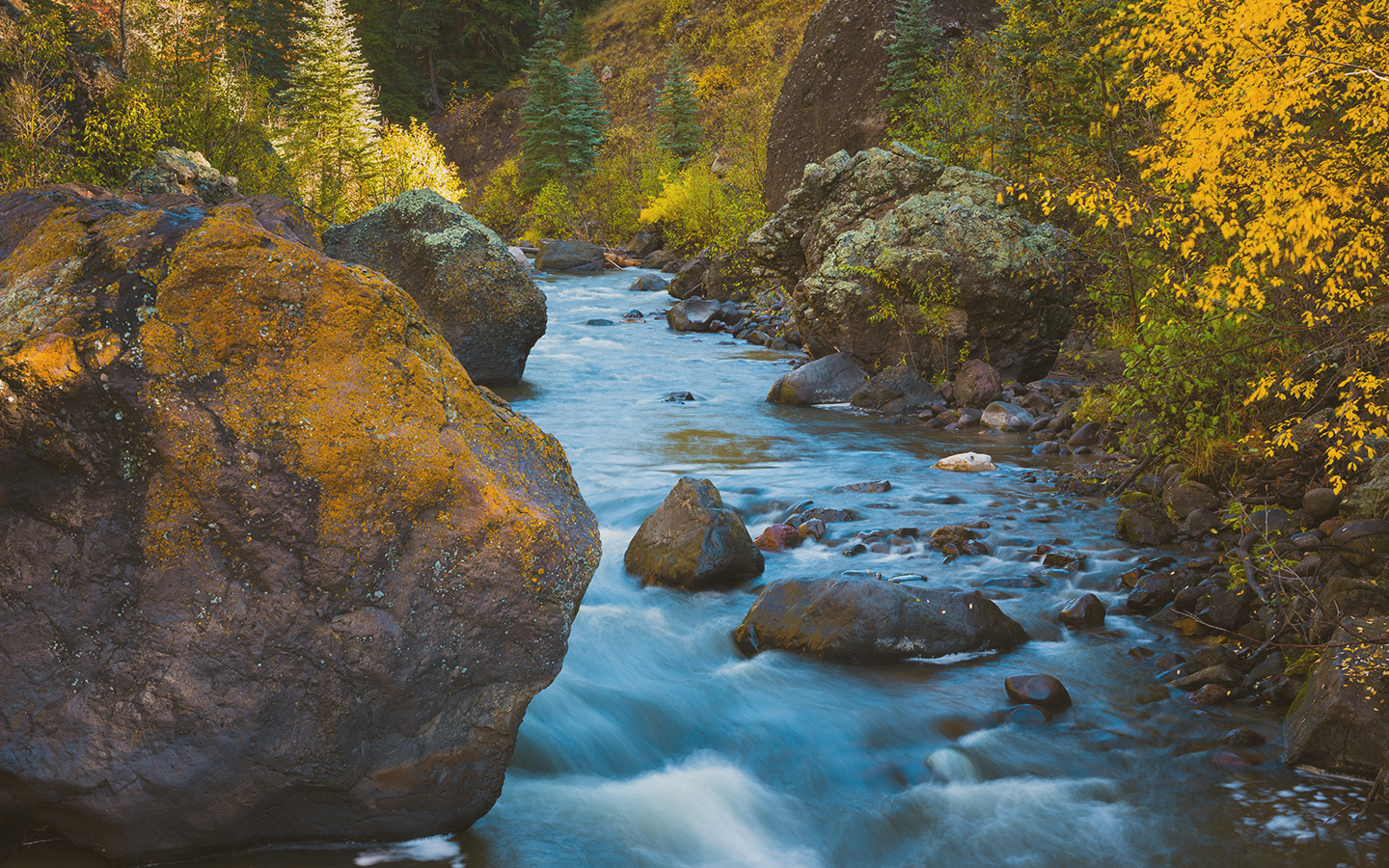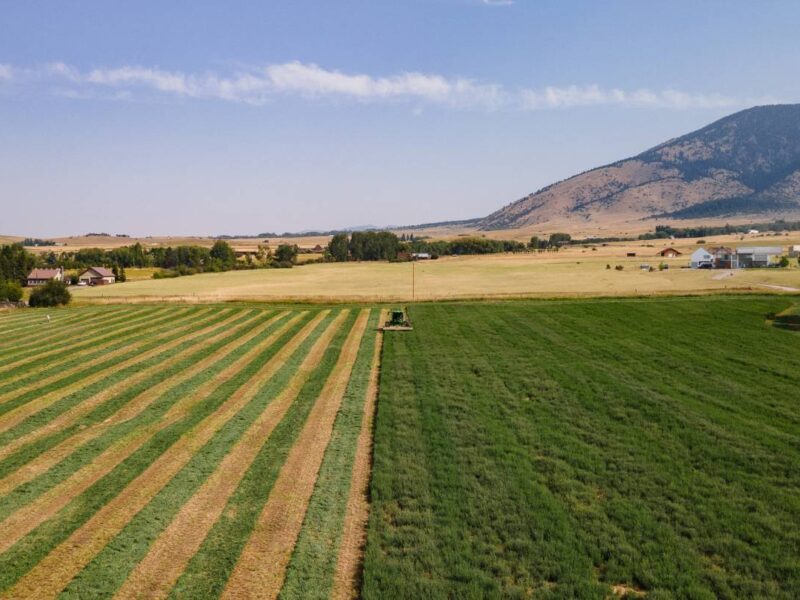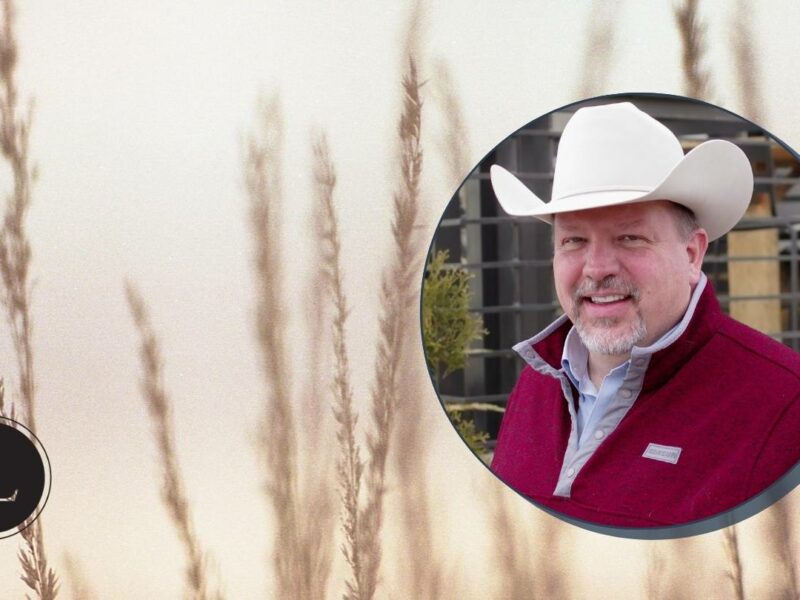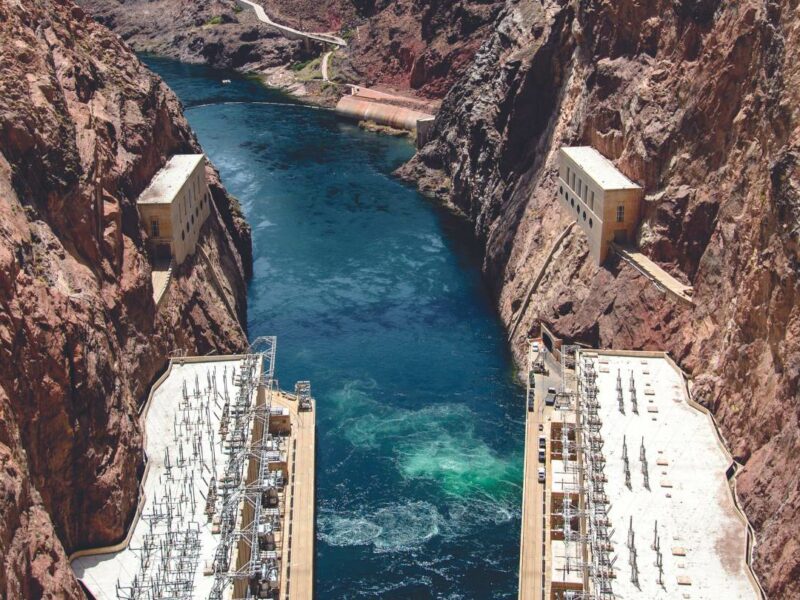New Mexico wades into troubled waters
This post was originally published in August 2020. With the NM Game & Fish Commission set to meet Friday, June 18th, 2021 to rule on five outstanding non-navigable certification requests, as required by a federal court, and misinformation once again spreading in state and national press, the piece is once again a must read.
The overlooked impacts of the perpetual push for ever more recreational access to and through private land.
When Dan and Ashlyn Perry purchased the Trout Stalker Ranch in New Mexico ten years ago, the section of the Chama River that ran through it was in poor condition with eroded banks, shallow water and few fish. Just upstream, the aging local wastewater treatment plant leaked raw sewage into the stream. Today, thanks to their efforts and investments, the fishery is flourishing, the wastewater treatment plant has been replaced and the land has been permanently protected from development under a conservation easement. Unfortunately, it’s a success story that is now coming back to bite them.
A few miles further up the watershed, Rancho del Oso Pardo was just about to embark this summer on another round of restoration efforts designed to restore native Rio Grande cutthroat trout. The species has been hovering on the brink of a federal listing under the Endangered Species Act and would already have been listed were it not for restoration efforts on private ranches like Vermejo Park and Oso Pardo. But this year’s restoration project on Oso Pardo, along with other similar projects in the region, came abruptly to a halt just before the restoration work got underway.
The problem is that as landowners restore streams and fisheries on private lands, anglers want in. For many decades in New Mexico, the law, rules and regulations seemed clear that private landowners held the title and the ability to control access to the bed and banks of non-navigable streams. The law is similar to that of other states like Colorado and Wyoming and is in keeping with the U.S. Supreme Court ruling in PPL Montana vs. Montana. For non-navigable streams, the public owns the water but the landowner owns the land under the water. The public is free to float on the water without touching the land but must ask permission to wade up the stream or along the banks. In 2014, however, then New Mexico state attorney general Gary King issued an opinion at the request of fishermen that ran contrary to decades of interpretation of the law, throwing the whole situation into confusion.
Battles over whether public or private landowners control access to streams have been taking place around the country for years due to this awkward intersection of public and private rights. State laws vary and the U.S. Supreme Court has weighed in. It’s a complicated issue around which passions run tremendously and sometimes dangerously high.
In New Mexico, for example, landowners have purchased and improved land in good faith based on longstanding laws, rules and regulations. They have paid taxes and insurance, spent tens and even hundreds of thousands of dollars out of pocket restoring streams, enacted permanent conservation easements, and established commercial hunting and fishing programs and contracts with local guides and outfitters. Gary King’s opinion threatened to undermine all of those investments, and disrupt landowners’ ability to control and manage their properties.
Alarmed, landowners across the state moved quickly to bring forward legislation that re-affirmed what they believed to be their rights. The legislation passed by a narrow vote and included a new requirement that the state game commission establish a process to certify streams as navigable or non-navigable. The intent was to provide clarity for landowners, the public and law enforcement.
On the other side of the fence, the New Mexico Wildlife Federation and other sportsmen’s groups had their hopes that streams on private land would now be open to the public buoyed by King’s opinion. Those hopes were soon dashed with the passage of the legislation. Outraged by what they saw as a lost opportunity, they spun the argument that rich, out of state landowners had taken away rights of access which the public had previously enjoyed. The sportsmen’s campaign went so far as to produce a television commercial vilifying Dan Perry for privatizing streams.
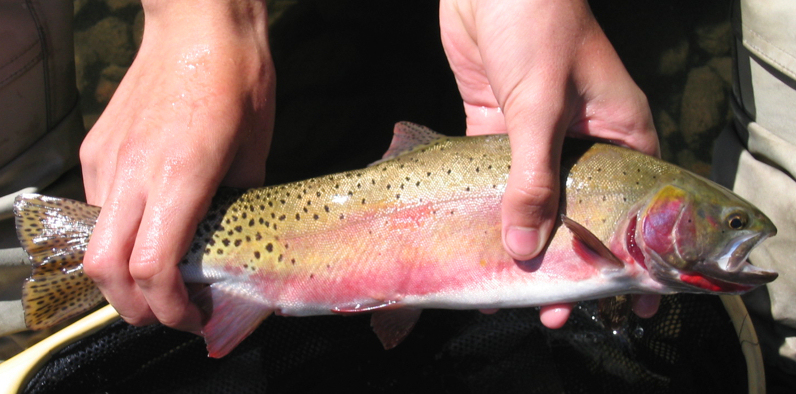
The Rio Grande Cutthroat Trout, the state fish of New Mexico, occupies just 10 percent of its historic range, with populations confined to only about 100 headwaters streams.
Aaron Jones, a native New Mexican, sportsman and long-time manager of Rancho del Oso Pardo decried the spread of misinformation. “The sportsmen’s groups and the media are saying that landowners are trying to take something away from the public when in fact it is just the opposite. The landowners have had these protections. You needed permission to wade in these streams. It’s the sportsmen who are trying to open access that didn’t exist previously.”
Almost inevitably, litigation ensued. Sportsmen’s groups seeking to overturn the 2015 legislation and stream certification rule have taken the case to the New Mexico Supreme Court. The tension was already very high but the entry of New Mexico’s senators and Trout Unlimited into the fray escalated matters. Senators Heinrich and Udall petitioned to enter the case in support of the sportsmen while Trout Unlimited penned a supportive op-ed in the Albuquerque Journal. For some landowners, including those who had led historic efforts to improve streams and recover imperiled trout species, this was the last straw. Up until that point, despite the battle over public access, landowners had continued their efforts to restore and conserve streams. This turn of events left landowners feeling that trust had been violated and they cancelled planned restoration projects.
“I feel betrayed,” Jones said. “We heard about TU’s position in the Albuquerque Journal and I was so disappointed. We just immediately put the brakes on. I would love to have TU involved with our projects because they have really good people in the organization that can help make a project better. It’s sad we can’t tap into that so now I am looking for other partners.”
Dan Perry shared the same sense of disappointment. “Thirty years ago, I started fly fishing and I got really interested in it and started studying about trout and what amazing creatures they are and how they are fragile and need to be taken care of to stay alive,” he said. “And I believed TU was an organization dedicated to maintaining habitat, but when they decided it was more important to support public access than the habitat, I sent a letter resigning my life membership. Landowners here don’t want anything to do with them now. I can see the Rio Grande cutthroat trout becoming endangered before long and we could even lose that fish which is the state fish of NM.”
“What can we do to shelter from this so that all these years of work and protection and stewardship don’t go down the drain?”
Aaron Jones
The most significant casualty in the battle over public access to private lands ends up being the fish and wildlife that depend on private lands and landowner investments. More than 80 percent of wildlife depend on private lands for survival. In the arid state of New Mexico, fragile streams on private land provide much of the last remaining refugia for native trout and other imperiled species. In many cases, streams like those Rancho del Oso Pardo has restored are tiny and their habitats easily damaged. Recognizing this, the ranch owners have severely restricted their own fishing access and do not allow commercial hunting or fishing on the property.
“What can we do to shelter from this so that all these years of work and protection and stewardship don’t go down the drain?” Jones asked. “We have put a lot of work into this and it is very, very concerning that it might all come unraveled.”
Not only have demands for public access dampened landowners’ enthusiasm for restoring habitats, they are also providing a significant disincentive to invest in conserving these lands. Places with streams and the kinds of fishing opportunities the public seeks are also the places at highest risk of development. Rancho del Oso Pardo not only supports multitudes of wildlife and the local hunting economy, but it is located in the heart of the San Juan-Chama watershed which supplies approximately thirty percent of New Mexico’s surface water, including up to 70 percent of the municipal water for Albuquerque. The ranch has been working collaboratively with a number of stakeholders to improve forest and watershed health and resilience to fire, thereby securing one of the state’s most important water resources. All of that is now at risk.
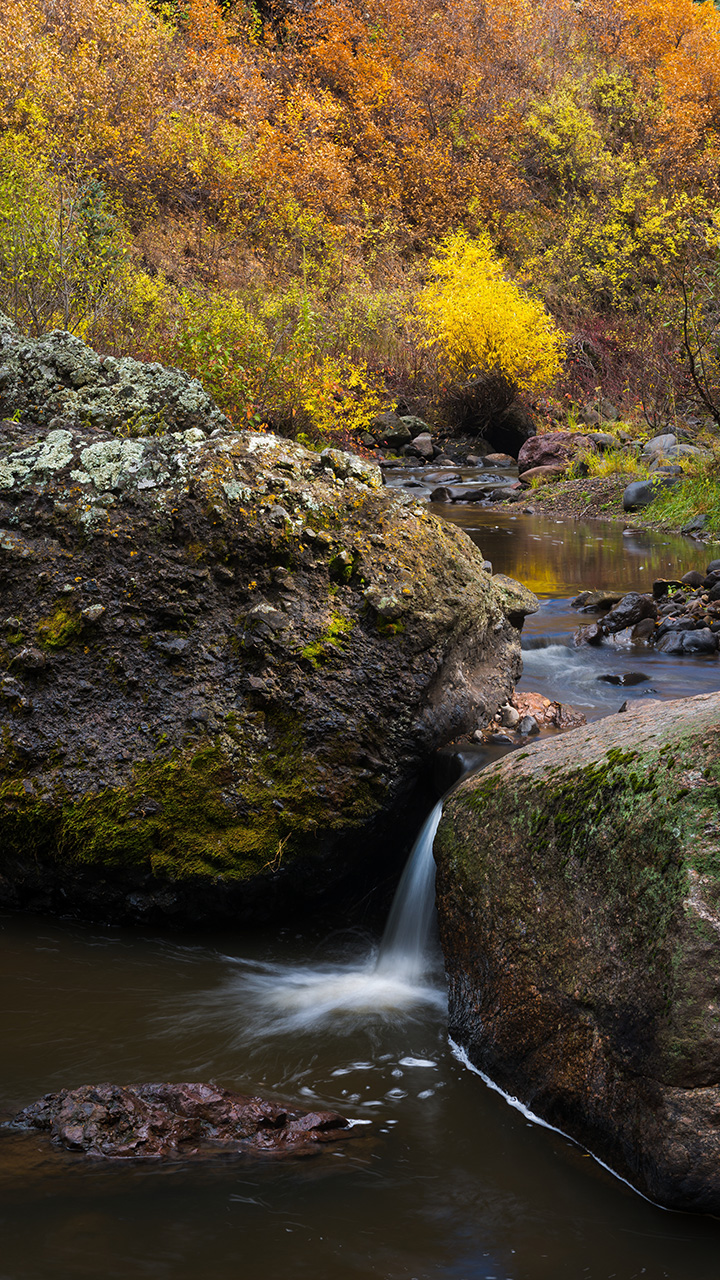
“This whole issue of opening public access has started a conversation about the future of the ranch,” Jones said. “I don’t think people think about stuff like that. Some of our members are already saying that if this happens, we’ll have to sell. They will go to Argentina or Canada or another state instead of investing here.”
In too many cases, when ranches like Oso Pardo are sold and broken up into the sprawling rural subdivisions that already dominate much of the surrounding area, it inevitably diminishes a number of resource values and public benefits, including the watershed, forests, fish and wildlife.
For the Perry’s, the situation is considerably worse. When the Perry’s put a conservation easement on their land, they willingly gave up a significant amount of monetary value in the property in order to ensure it remained intact in perpetuity. If public access were to be opened, particularly given that the ranch is located in an area of heavy public use, the property would lose significantly more value still—Perry said he has heard estimates of up to 50 percent. In addition, the Perrys have just completed their home on a site reserved under the easement. Instead of being able to enjoy peace and privacy on their own property, they would now be subject to a constant flow of human foot traffic.
The Perrys have banded together with other landowners in the state, including the New Mexico Farm and Livestock Bureau, the New Mexico Cattle Growers Association, the New Mexico Guides and Outfitters, the Upper Pecos Watershed Association and numerous individual landowners in the court battle.
For Jones, this comes at a cost. “We have a budget and what we would have spent on habitat work we are now spending on litigation to defend our property rights. We could have done a lot of work with the money we are spending there.”
Perry anticipates it will be a long battle. “I think it will be a very lengthy and protracted litigation cycle. There will be any number of appeals and it ultimately could go to the U.S. Supreme Court. We’ll take it there if we need to because we have PPL Montana on our side. In the meantime, I think there will be a lot of conflict on the water, a lot of destruction of habitat. I foresee chaos on the rivers.”


